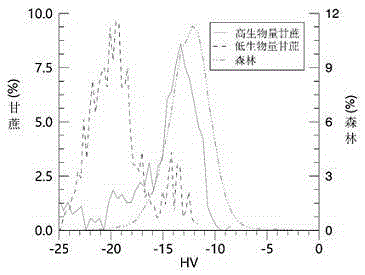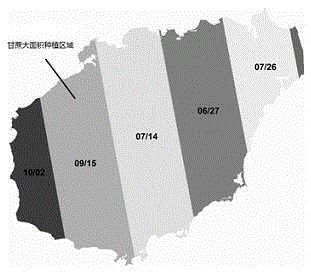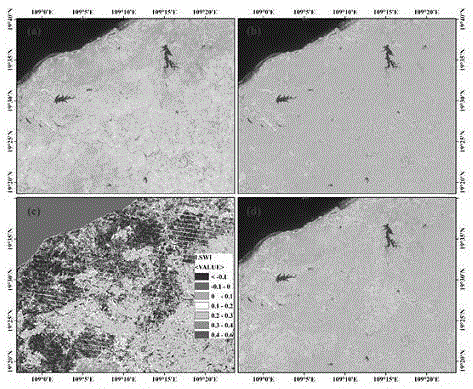Method for removing high biomass sugar cane in PALSAR forest classification result
A technology with classification results and high biomass, applied in the field of remote sensing image processing, can solve problems such as affecting the accuracy of classification results, and achieve the effect of improving accuracy
- Summary
- Abstract
- Description
- Claims
- Application Information
AI Technical Summary
Problems solved by technology
Method used
Image
Examples
Embodiment 1
[0021] Example 1: The experimental location is the coastal area of Danzhou, Hainan Province. The PALSAR radar image is a mosaic product in 2009 (with a spatial resolution of 25 meters). The acquisition time of the two strip images was September 15 and October 2, A large amount of sugarcane is planted in the coastal areas of these two strips, and sugarcane has a high biomass after mid-to-late September.
[0022] Preprocess the PALSAR image, convert the DN value of the image to normalized radar cross-section backscatter data (sigmanaught), use the decision tree classification method to realize forest classification, and resample the forest classification result to 30 meters.
[0023] The deciduous forests in Hainan are mainly rubber forests. During the early stages of leaf defoliation and leaf extraction (January to early April), the moisture index of the forest may be lower than zero. Therefore, TM / ETM+ images (L1T) with an annual accumulation of 100-365 days in 2008-2009 wer...
PUM
 Login to View More
Login to View More Abstract
Description
Claims
Application Information
 Login to View More
Login to View More - R&D
- Intellectual Property
- Life Sciences
- Materials
- Tech Scout
- Unparalleled Data Quality
- Higher Quality Content
- 60% Fewer Hallucinations
Browse by: Latest US Patents, China's latest patents, Technical Efficacy Thesaurus, Application Domain, Technology Topic, Popular Technical Reports.
© 2025 PatSnap. All rights reserved.Legal|Privacy policy|Modern Slavery Act Transparency Statement|Sitemap|About US| Contact US: help@patsnap.com



